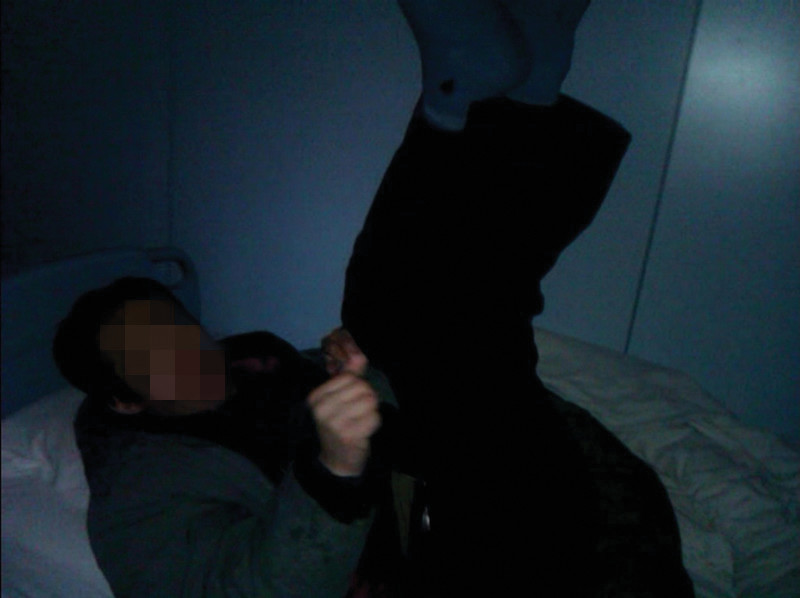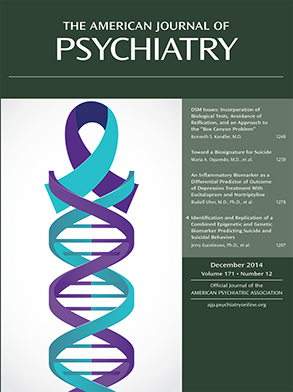Case Presentation
“Mr. X,” a 42-year-old married taxi driver from Beijing, came to the emergency department with insomnia, a severe and constant burning sensation and pain in the lumbar spine, hip and knee joints, and soles of the feet, and a sense of tremor in his limbs. Treatment with a nonsteroidal anti-inflammatory drug was ineffective. After physical examination, laboratory studies, an X-ray of the affected joints, and MRI of the brain and spine showed no obvious abnormalities, the emergency department referred the patient to a psychiatric hospital with a diagnosis of pain somatoform disorder.
After 2 months of psychopharmacotherapy that included duloxetine (60 mg/day) and mirtazapine (45 mg/day), Mr. X’s lower joint pain had disappeared, but the tremulous sensation in his limbs persisted. He had also started to have dizziness, nausea, ataxia, blurred vision, and further sleep problems—sleeping up to 15 hours a day, falling asleep during conversations or meals, and exhibiting pronounced sleep talking. More remarkably, during supine sleep, his hands and feet were raised up in the air, and he maintained these awkward postures for 1 to 2 hours (Figure 1). Given the complexity of the case, the patient was transferred to a psychiatric teaching hospital, with diagnoses of pain somatoform disorder and sleep disorder, 5 months after the initial presentation. Mr. X was noted to be a thin, neatly dressed man, ambulating with his wife’s help. Well-oriented and generally cooperative, he was euthymic, with intermittent attention and focus, and his main complaint was his unsteady gait. He was not too concerned about the hypersomnia, the odd behavior during sleep, or the newly reported sensation of having, imbedded in his back, four balls that further divided into smaller ones. His thought process was coherent. Mr. X had no previous personal or family psychiatric history and no history of epilepsy, infectious diseases, or sleep or pain disorders. His relationships were harmonious and his life was free of significant stressors. He smoked occasionally and drank socially; he denied any other substance use. His medical history was positive for chronic psoriasis (for the past 10 years); he had taken daily Chinese herbal decoctions for 3 months from a private clinic before admission 5 months ago.
Findings from physical examination included mild oral mucosal ulcers and swelling of the gums; scattered crusted papules on the head, face, and truncal areas, moderate scaling of the skin in the truncal areas; mild hand tremors and weakness (grade IV, bilaterally); visible atrophy and weakness (grade III, bilaterally) in the lower extremities; weak knee and ankle reflexes (grade 1); poor accuracy in finger-to-nose and heel-to-toe walk tests; unsteady gait; and a positive Romberg test (worse with eyes closed). Touch and temperature sensation tests were normal, as were ECG, chest X-ray, blood count, electrolyte levels, and thyroid, liver, and kidney function tests; hepatitis B and C screens were negative. Routine urine analysis showed a protein level of 1+, at 3.3 g/L. The patient also had mild dyslipidemia and slightly low total serum protein and albumin levels, and his EEG showed increased theta activity and decreased alpha activity. Repeat cranial and lumbar spine MRIs were normal.
Mr. X continued to have narcoleptic attacks and unusual movements, postures, and sleep talking. He even conversed a little with clinicians during these sleep talks, and he recalled such exchanges, as well as various dream content, when he awoke. For example, he recalled having seen a cat taking his money and running off, foxes transforming into clothing, and people in his village scolding him. He reported that he largely believed all these events to be true, which caused concern about a new onset of delirium or psychosis.
The treatment team pursued a new differential diagnosis: mental disorders secondary to intracranial infection, neoplasm, or a substance or toxin; and sleep disorder related to psychomotor seizures. Subsequent investigations were positive for delirium (a score of 23 on the Delirium Rating Scale) (1) and peripheral neuropathy, with electromyography showing a bilateral decrease in peroneal nerve compound motor action potential amplitude. A repeat sleep EEG study was inconclusive because of excessive movement. Enzyme-linked immunosorbent assay tests for routine tumor markers (CA125, CA199, CA153, CEA, and AFP), infectious disease screening for syphilis and HIV antibody, and selective autoantibody testing for neurological paraneoplastic syndrome were all negative. Based on these results, a toxin-related disorder became the leading option in the differential diagnosis. Recalling that Mr. X took herbal decoctions (a mixture of fresh and dried herbs, with calomel added, boiled and consumed like tea, no fixed formulation) for psoriasis, the treatment team undertook toxicology studies. Inductively coupled plasma-mass spectrometry produced confirmatory results that showed an alarming mercury concentration of 876 mg/kg (normal limit, <0.5 mg/kg) in the herbs he took (2), a serum concentration of 23.2 ng/mL (normal, <2.5 ng/mL), and a urine concentration of 14.8 ng/mL (normal limit, <10 ng/mL) (Beijing specialty laboratory reference range based on Chinese standards; the U.S. Environmental Protection Agency safety benchmark for blood is <5.8 ng/mL [3, 4]). A 24-hour urine analysis showed a 3+ protein level at 6.0 g/L and a high urinary N-acetyl β-D glucosamine (NAG) level at 27.5 U/24 hours. Mr. X was promptly started on treatment for mercury poisoning at a general hospital, chiefly using the chelator DMPS (2,3-dimercapto-1-propane sulfonate). After three courses, 60 days of mercury chelation, hydration, and enhanced nutritional therapies, Mr. X’s serum mercury level dropped to 3.1 ng/mL, and his urinary level to 3.9 ng/mL. His kidney function improved markedly, his narcoleptic attacks and the bizarre postures and muttering during sleep remitted, his pain lessened, and he could walk and drive and work again. One month after discharge, Mr. X exhibited stable mood, fluent speech, good attention and focus, and clear thought process, and he was free of delusions and perceptual abnormalities. He still had residual proteinuria (a protein level of 1+ at 2.5 g/L and a urinary NAG level of 14.5 U/24 hours).


